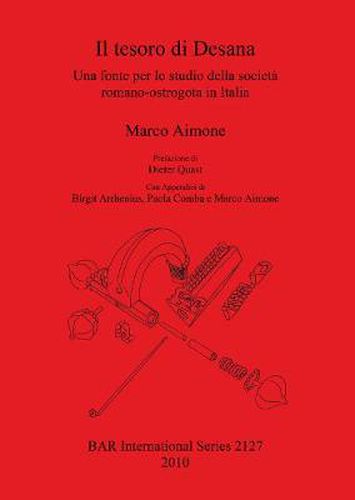Readings Newsletter
Become a Readings Member to make your shopping experience even easier.
Sign in or sign up for free!
You’re not far away from qualifying for FREE standard shipping within Australia
You’ve qualified for FREE standard shipping within Australia
The cart is loading…






This title is printed to order. This book may have been self-published. If so, we cannot guarantee the quality of the content. In the main most books will have gone through the editing process however some may not. We therefore suggest that you be aware of this before ordering this book. If in doubt check either the author or publisher’s details as we are unable to accept any returns unless they are faulty. Please contact us if you have any questions.
The Desana Treasure has been well known since its discovery, or rather, since it was purchased on the antiques market in 1938 by the ‘Museo Civico di Arte Antica’ in Turin. The composition of the Desana treasure shows that is was ‘collected’ over centuries. A ring with gemstone and a chain from the 2/3rd century are the oldest elements and objects from early 6th century the most recent. The latter give the date for the burial. Though, most objects are from the late 5th / early 6th century AD, that is from the reign of Theoderich the Great. The composition of the Desana treasure is interesting from another point of view as well. There are male and female dress adornments and silverware in the form of spoons. This new analysis of the Desana treasure allows a fresh view on this complex and offers insights into society in Ostrogothic Italy, especially into the relationship between old Latin landowners and Ostrogothic nobility. The detailed description and photographs of the 51 objects give valuable information regarding the goldsmith’s art, which is extremely important because of the lack in Italy of burials of the same value belonging to that period. So, this description is crucial for future research about goldsmith’s workshops in the late antique Mediterranean.
$9.00 standard shipping within Australia
FREE standard shipping within Australia for orders over $100.00
Express & International shipping calculated at checkout
This title is printed to order. This book may have been self-published. If so, we cannot guarantee the quality of the content. In the main most books will have gone through the editing process however some may not. We therefore suggest that you be aware of this before ordering this book. If in doubt check either the author or publisher’s details as we are unable to accept any returns unless they are faulty. Please contact us if you have any questions.
The Desana Treasure has been well known since its discovery, or rather, since it was purchased on the antiques market in 1938 by the ‘Museo Civico di Arte Antica’ in Turin. The composition of the Desana treasure shows that is was ‘collected’ over centuries. A ring with gemstone and a chain from the 2/3rd century are the oldest elements and objects from early 6th century the most recent. The latter give the date for the burial. Though, most objects are from the late 5th / early 6th century AD, that is from the reign of Theoderich the Great. The composition of the Desana treasure is interesting from another point of view as well. There are male and female dress adornments and silverware in the form of spoons. This new analysis of the Desana treasure allows a fresh view on this complex and offers insights into society in Ostrogothic Italy, especially into the relationship between old Latin landowners and Ostrogothic nobility. The detailed description and photographs of the 51 objects give valuable information regarding the goldsmith’s art, which is extremely important because of the lack in Italy of burials of the same value belonging to that period. So, this description is crucial for future research about goldsmith’s workshops in the late antique Mediterranean.